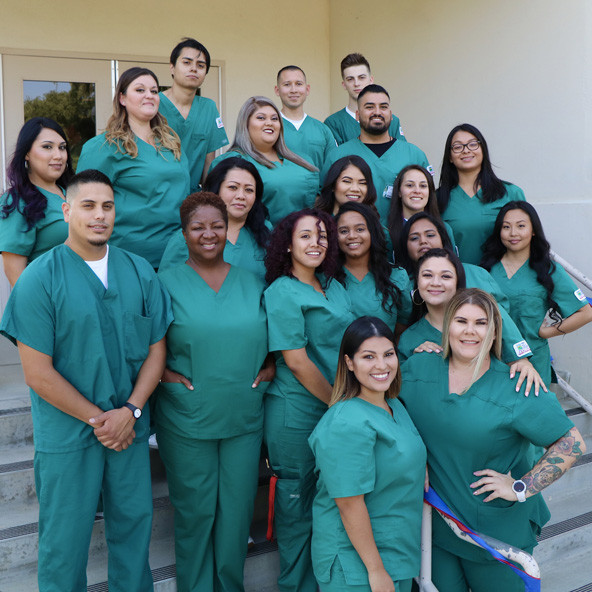Public postsecondary education is in transition. This should come as no surprise to anyone who has taken an online course, read an open-source textbook, or used an app in a classroom. Innovation in higher education—particularly through reforms that increase college completion rates and make it more affordable—can create academic and economic pathways for students who otherwise may never have those opportunities. We have implemented such reforms in the West Hills Community College District, helping improve educational equity in the 3,464-square-mile rural service area in California’s Central Valley.
However, this is a challenging time for both the college and the state. Earlier this year, Governor Brown rerouted funds from California State Bill 1070, which established the Career Pathways Initiative to the tune of $48 million annually, to the state’s Strong Workforce Program. Over 12 years, SB 1070 served tens of thousands of students across the state, markedly improving the lives of the bill’s largest constituent group: residents of the Central Valley. The Central Valley—roughly the area between San Francisco and Los Angeles—is home to 4.5 million people spread across 10 counties, more than 50 percent of whom registered as non-white, Latino in the last US Census. The region’s community colleges feed into the Central Valley’s largest four-year university, California State University, Fresno, which reports that 67 percent of its students are the first in their immediate families to pursue a four-year degree.

The Central Valley Career Advancement Academy used SB 1070 legislation to establish an eight-college consortium working to close the gap between industry and education by placing skilled workers in vacant jobs. To meet regional needs, the Central Valley colleges built programs in areas such as manufacturing and machining, health care language interpretation, wastewater treatment, and information technology. We targeted underserved, non-traditional students in the Central Valley: working adults who attended college classes but didn’t finish a certificate or degree program. To reach these students, we offered classes during evenings and weekends. We scheduled blocks of programs between agricultural seasons to attract populations of farm workers (as high as 61 percent of workers in some areas), and we condensed classes to maximize classroom time and reduce dropout rates. On average, dropout rates lowered by at least 10 percent, which translates to retaining three more students per class who would have otherwise dropped. Classes also focused on increasing performance levels in reading, writing, and mathematics by keeping peers together over multiple semesters and reintroducing basic skills into advanced curriculum. Pre and post testing of CAA student groups recorded average grade level increases of more than one level in reading and more than five levels in mathematics where basic skills were reintroduced. Career Advancement Academy programs were among the first in the state to test these techniques, which state and federal programs adopted in subsequent years.
 Graduates of the West Hills College Coalinga Psychiatric Technician Career Program. (Photo courtesy of West Hills Community College)
Graduates of the West Hills College Coalinga Psychiatric Technician Career Program. (Photo courtesy of West Hills Community College)
While many of the Career Advancement Academy’s programs have been institutionalized in Central Valley colleges, the sudden departure of state funds left us wondering how we could continue to attract students once our program ends in June 2018. We knew that 40 percent of college students are over age 25, and this group has the lowest graduation rate in all of academia. Nearly one-quarter of adults over 25 in the Central Valley have “some college, no degree,” while a national study found that adults are 75 percent more likely to return to college if they were able to “earn credit for what they already know.” How could we take this knowledge and continue this work to advance equity in our rural communities?
We responded to this challenge by designing something called QuickPath Prior Learning Assessment, an online program to reengage adult students in the Central Valley. The assessment allows learners to demonstrate knowledge and skills they acquired outside the classroom and have that learning evaluated for college credit. According to research from the Council on Adult and Experiential Learning, students earning prior learning assessment credit take an average of 9.9 more course credits than their peers and are 2.5 times more likely to graduate. Latino students, a major demographic in the Central Valley, are 7.5 times more likely to graduate when earning such credits. We expanded Career Advancement Academy’s eight-college consortium to 14, representing the 10 county Central Valley Region, and wrote a proposal for the California Awards for Innovation in Higher Education that focused on bringing prior learning assessment to the area. The state granted us the $2 million award to build and scale the project, recognizing the value of QuickPath and other initiatives.
Through the QuickPath online portal, students may access standardized tests, receive credit by exam, substitute courses, and submit a portfolio assessment for faculty review. The student perspective illustrates the benefits of QuickPath’s portfolio assessment feature. One student, for example, had worked as a receptionist and bookkeeper at a construction company for the last 10 years and was ready for a promotion. However, she did not have the college credit or degree her employer required for that promotion. Using QuickPath, she created an online portfolio that included copies of accounting spreadsheets, professional certificates, and a performance evaluation and letter of recommendation from her employer. A college faculty member evaluated the submitted portfolio against the course outcomes for Introduction to Accounting, and determined whether to award the college credit and append her transcript.
Through partnerships with the Council on Adult and Experiential Learning, which provides technical assistance, and AcademyOne, the software developer that designed the online QuickPath portal system, our district is piloting the program across three colleges: West Hills College Coalinga, West Hills College Lemoore, and San Joaquin Delta College in Stockton. These institutions represent rural, semi-rural, and urban service areas common in Central California. The goal is to have the pilot colleges implement QuickPath in 2018, expand to the 14-college consortium the following year, and then spread to the rest of the state.
Academic institutions focused on creating equitable education-to-workforce opportunities—in regions where a sizeable number of first-generation students or adults are retraining due to challenging economic conditions—should consider integrating assessment technology like QuickPath into their programs. Doing so requires that schools get buy-in from leadership and faculty and make a commitment to creating an infrastructure that supports the technology. Colleges can sometimes secure financial investment by approaching local or regional workforce investment boards and positioning the technology as a workforce initiative that drastically shortens the time workers spend earning industry-recognized certificates, quantifies upgrades in skills, and puts employees in jobs faster. West Hills Community College negotiated funds over three year-long phases to leave adequate time to plan, implement, and expand the project with regional partner colleges. In addition, as college administrators focus on growing demand in their region, they should recognize the financial value of adding adult students by way of prior learning assessment as an incentive to re-enter college.
Through the QuickPath portal, we are aiming to broaden opportunities for educational and career advancement in the demographically diverse Central Valley, picking up where Career Advancement Academy leaves off when it ends in June of 2018. The overlap of these two initiatives is not coincidental: They are both grounded in creating equitable pathways for traditionally underserved populations, promote regional collaboration, and share best practices to serve adults with “some college, no degree.” The torch of educational opportunity is passed.
Support SSIR’s coverage of cross-sector solutions to global challenges.
Help us further the reach of innovative ideas. Donate today.
Read more stories by Brian Boomer.

